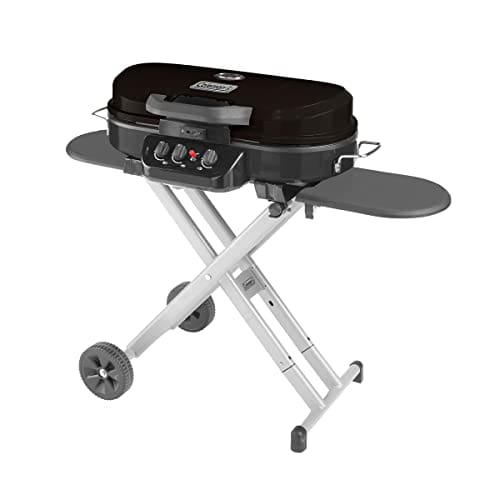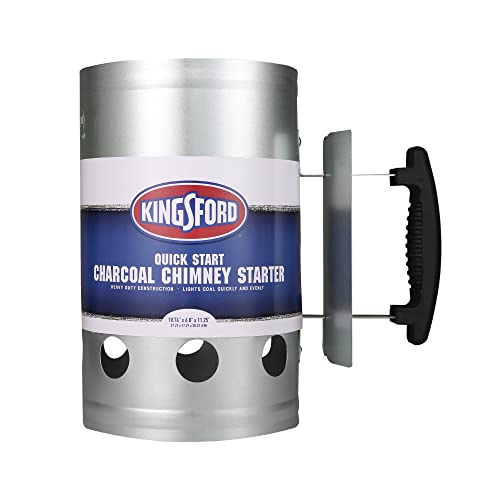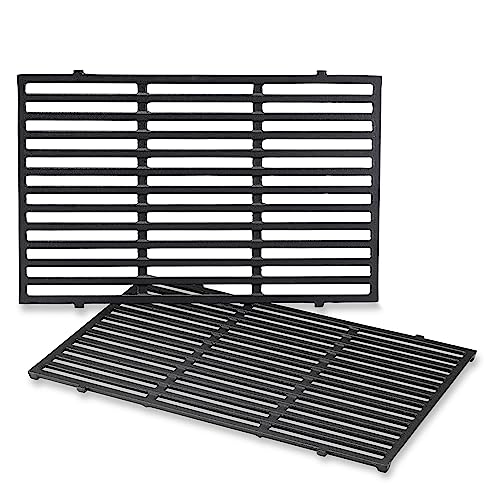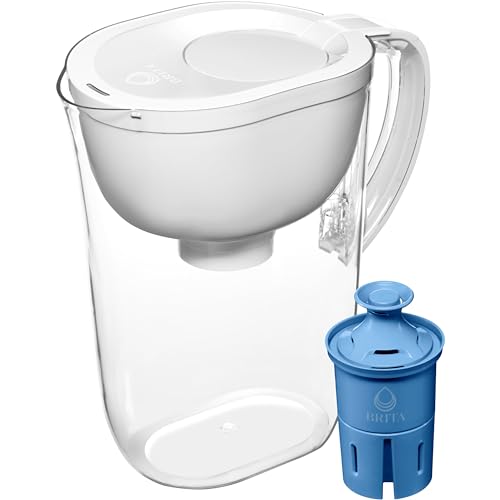How to prevent flare-ups on a tailgating grill?
Flare-ups can be a common problem when grilling, but there are several steps you can take to prevent them while using a tailgating grill. First, make sure you clean the grill thoroughly before each use to remove any debris or residue that can cause flare-ups. Next, choose leaner cuts of meat and trim excess fat to reduce the chances of flare-ups. It’s also important to preheat the grill properly before cooking, as this helps to reduce the risk of flare-ups. While grilling, avoid overcrowding the grill and be careful not to excessively oil the food, as this can contribute to flare-ups. Finally, be vigilant and keep a close eye on the grill while cooking, ensuring you’re ready to quickly take action if flare-ups occur. By following these steps, you can enjoy a safe and enjoyable grilling experience without worrying about flare-ups on your tailgating grill.
Top-rated grills for tailgating enthusiasts
Clean the grill grates
Before using your tailgating grill, it is important to clean the grates thoroughly. This will ensure that you have a clean and safe grilling surface for your food. Start by removing any leftover food or grease from the grates. Use a grill brush to scrub the grates, making sure to get in between the bars. This will help remove any stubborn residue.
After scrubbing, rinse the grates with water to remove any loose debris. If you notice any stubborn stains, you can use a mixture of baking soda and water to create a paste. Apply the paste to the stains and let it sit for a few minutes before scrubbing it off.
Once you have thoroughly cleaned the grates, make sure to dry them completely before using your grill. Damp grates can cause flare-ups due to excess moisture. You can use a clean cloth or paper towel to dry the grates or simply let them air dry.
By taking the time to clean your grill grates before each use, you can ensure that your tailgating experience is not only delicious but also safe.
Trim excess fat from meats
To trim excess fat from meats before grilling, follow these simple steps:
- Start by placing the meat on a clean cutting board.
- Use a sharp knife to carefully remove any visible pieces of fat. Hold the meat firmly with one hand and make smooth, even cuts with the other hand.
- Cut away the thick layers of fat, but be careful not to remove too much of the meat itself.
- As you trim, pay attention to any uneven areas of fat and remove them to ensure even cooking.
- It is also important to remove any silver skin, a tough and chewy connective tissue, that may be present on the meat. Simply slide the knife under the silver skin and cut it away.
- Once you have trimmed the excess fat, you can proceed with grilling. Remember to preheat your grill and cook the meat to the desired level of doneness.
By trimming excess fat, you not only reduce the risk of flare-ups but also create a leaner and healthier grilled meat option. Enjoy a safer and more flavorful grilling experience by following these simple instructions.
Use a drip pan or aluminum foil
To prevent flare-ups on your grill, you can place a drip pan or line the bottom of it with aluminum foil. This will ensure that any excess grease or drippings are collected and do not reach the flames. To do this, simply place a drip pan under the cooking grate or alternatively, line the bottom of the grill with a layer of aluminum foil. Make sure to shape the foil to match the contours of the grill to avoid any gaps or spaces where the grease might seep through. Remember to empty and clean the drip pan or replace the aluminum foil regularly to maintain its effectiveness.
Avoid overcrowding the grill
When grilling, it is essential to avoid overcrowding the grill. To ensure even cooking and reduce the risk of flare-ups, make sure to leave enough space between the food items. This will prevent dripping fat and juices from pooling together, which can easily lead to flare-ups and unevenly cooked food.
To avoid overcrowding, follow these simple steps:
- Arrange the food items on the grill, leaving a gap between each one.
- Give each item enough room to breathe and cook evenly.
- Do not stack or overlap the food; instead, spread it out in a single layer.
- Remember to leave space around the edges of the grilling surface as well.
- If necessary, grill in batches to give each item ample space.
By following these guidelines, you’ll ensure that your grill session is not only hassle-free but also produces delicious, evenly cooked food with minimal flare-ups. Happy grilling!
Control the heat
To maintain a consistent heat level and prevent flare-ups while grilling, follow these simple steps:
- Avoid cooking with overly high temperatures: High temperatures can cause fat to ignite quickly, leading to flare-ups. Instead, aim for a moderate heat level by adjusting the temperature controls on your grill. This will allow you to cook your food evenly and reduce the risk of flare-ups.For example, if you are grilling a steak, set your grill to medium-high heat (around 400-450°F). This will give you a nice sear without excessive flare-ups.
- Regulate heat using the grill’s temperature controls or adjust distance: Most grills come with temperature controls that allow you to adjust the heat levels. Use these controls to maintain a steady heat throughout the cooking process. Lower the heat a bit if you notice flare-ups occurring frequently.Additionally, you can also control the heat by adjusting the distance between the food and the flame. If you’re experiencing intense flare-ups, move the food to a cooler part of the grill or raise the grill grate to increase the distance from the flame.For example, when grilling chicken, start with the heat on medium-high and adjust it as needed throughout the cooking process to prevent flare-ups.
By following these tips, you can effectively control the heat levels while grilling and minimize the chances of flare-ups. Remember to always prioritize safety and keep a close eye on your grill while cooking. Enjoy your delicious and perfectly grilled meals!
Be vigilant and prepared
Always keep an eye on your grill while cooking. This means staying attentive and not getting distracted by other activities or leaving the grill unattended for too long. Flare-ups can happen unexpectedly, so it’s important to be prepared. Have a spray bottle filled with water within reach so that you can quickly douse any flare-ups that may occur. When you notice flames starting to rise, grab the spray bottle and aim it at the flames, spraying a fine mist of water to extinguish them. This immediate action can help prevent the flames from getting out of control and ensure a safe grilling experience. Remember, safety should always be your top priority when enjoying outdoor cooking.
Tips for Flare-up Prevention
In conclusion, taking a few precautions can go a long way in preventing flare-ups on your tailgating grill. Regularly cleaning the grill grates, trimming excess fat, and using a drip pan or aluminum foil are simple yet effective measures. Also, be mindful of overcrowding your grill and take control of the heat to keep flare-ups at bay. By following these tips, you can enjoy a worry-free grilling experience and savor the delicious food with family and friends. Happy grilling!
Necessary Equipment
Grill Maintenance Tips
What is the object hanging on your gas grill?
Using the Tailgating Grill
- Make sure the tailgating grill is set up on a flat and stable surface away from any flammable materials
- Before lighting the grill, check the fuel level, whether you’re using charcoal or propane, and make sure you have enough for the cooking duration
- If using a charcoal grill, arrange the charcoal in a pyramid shape and use lighter fluid or chimney starter to ignite the coals. Allow the coals to burn until they turn ash gray before cooking
- If using a propane grill, open the propane tank valve and turn the burner knobs to high. Press the ignition button or use a long lighter to start the flame
- Once the grill is preheated, place your food on the cooking grate. Be cautious of placing food directly over direct flames to avoid burning
- Cook your food according to the recommended time and temperature guidelines for the specific food item
- Monitor the cooking progress, flipping or turning the food as necessary to ensure even cooking
- Use grilling utensils like tongs or spatulas to handle the food and avoid using forks, as it can pierce the meat and let juices escape
- After cooking, turn off the burner knobs for propane grills or close the vents for charcoal grills to extinguish the flames
- Allow the grill to cool down completely before cleaning. Use a grill brush to remove any food particles or residue from the grates
- Clean the grill thoroughly after every use to prevent buildup and prolong the life of your tailgating grill
Common Questions about Tailgating Grills
How much cooking space does a typical tailgating grill offer?
A typical tailgating grill offers a cooking space of around 200 to 300 square inches. This size is sufficient to cook for a small to medium-sized group of people while tailgating. It allows you to grill burgers, hot dogs, steaks, chicken, and other delicious dishes. However, please note that the exact cooking space may vary depending on the model and brand of the grill you choose.






























